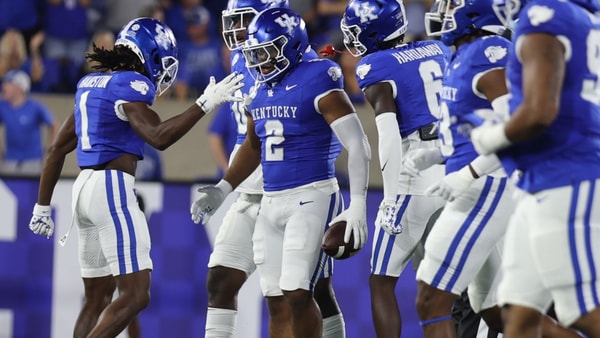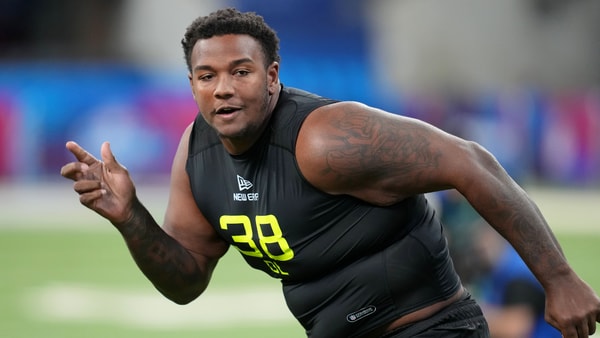What to know about preliminary House v. NCAA settlement

The new world order of college athletics has officially arrived. After the implementation of the transfer portal and name, image, and likeness (NIL) entered the college sports space at around the same time, we have seen the model completely change. This is the pay-the-players era. After asking for fans to foot the bill since 2021, universities will join the party in 2025.
After a brief delay in the U.S. District Court for the Northern District of California, the House v. NCAA settlement received preliminary approval on Monday. To be as simple as possible, this means schools like the University of Kentucky can now offer athletes compensation via revenue sharing.
There are still numerous details to iron out, including nearly $3 billion in damages to be paid to athletes in the decade before the pre-NIL era, but the NCAA took a huge step forward in a courtroom in California on Saturday.
We are still waiting for this to become official but there has been some reporting on the changes likely arriving in 2025. KSR is diving into the ones you need to know about.
House vs. NCAA settlement fallout
1.) Revenue-Sharing
Schools can now share money earned with athletes beginning with the 2025-2026 academic year as long as everything goes to plan. The expectation is that revenue-sharing will begin in July. That revenue number cap will rise by four percent each year. We do not have a locked-in figure yet but it’s expected to be between $21-23 million. Schools will use that money and distribute it to athletes. The next question to answer is regarding Title IX and whether funds will be dispersed evenly to all athletes. That is undetermined at the moment, but Yahoo Sports’ Ross Dellenger has reported that a model of football getting 75-85%, men’s basketball getting 10-15%, and all other sports receiving 10-15% is how schools are planning on operating.
Top 10
- 1Breaking
Shedeur Sanders drafted
The wait is over
- 2New
Costly fall in NFL Draft
How much plummet costs Shedeur Sanders
- 3
Mel Kiper
Gets fired up talking Shedeur Sanders
- 4Hot
Prank Callers revealed
Video of Shedeur Sanders prank callers
- 5
Picks by Conference
SEC, Big Ten continue to dominate Draft
Get the On3 Top 10 to your inbox every morning
By clicking "Subscribe to Newsletter", I agree to On3's Privacy Notice, Terms, and use of my personal information described therein.
2.) Roster Limits
Part of the settlement had to do with expanding rosters and eliminating walk-ons. The current proposal expected to be finalized will bump football rosters up from 85 scholarships to 105 scholarships and men’s and women’s basketball up from 13 scholarships to 15 scholarships. Baseball teams now can use 34 scholarships, which brings a huge change to roster-building in that sport. Not all of these scholarships need to be used and we could expect multiple schools to come short of that total in basketball and baseball but the expectation is that every SEC and Big Ten football program will get to 105 scholarship players. Can ACC, Big 12, and high-end Group of Five schools afford to pay 105 football players? That is to be determined.
3.) NCAA now has a way to deal with collectives
Perhaps the main reason we saw college administrators push for this settlement was to give them some teeth when trying to enforce rules with NIL collectives. The pay-for-play era has created a Wild West situation where some states are passing certain NIL legislation which gives Old State U leverage over the rest of their peers. We’ve also seen some high-powered collectives (Ole Miss, Ohio State) help build a top-10 roster via booster money. The settlement now allows universities to enter the chat in the payment process. A large portion of athletes will make more from revenue-sharing than from any NIL deal. As long as House v. NCAA officially passes, any non-university NIL deal must be approved through a third-party clearinghouse. That will help police the top of the food chain. Arbitration will be an option for appeals on NIL deals. The settlement gives the NCAA protection and an enforcement arm in dealing with pay-for-play. In theory, the NIL deals will become more legitimate in this model.
4.) Lawsuits will slow down but not stop completely
College institutions are taking on a heavy financial burden in this settlement. The nearly $3 billion in back pay will begin in May and many former football players will receive six figures from their previous college institutions. However, that was a move that needed to be made to get universities out of the courtroom. The pay-for-play lawsuits will slow down but do not expect all lawsuits to evaporate. Title IX is a big issue that still must be settled. Athletes are still not employees and that brings on a whole different set of problems since these rules were not collectively bargained. The settlement is a big step in the right direction but it does not solve every problem. It might even create some new and unexpected problems.
5.) Not every school has to opt-in
College athletics is a wide space that involves many more schools than the FBS or even Division I basketball. Not everyone will want to take on this revenue-sharing burden. This was a move made for power conference teams. Do not expect everyone to opt-in. Some Group of Five schools will still operate under the amateurism model. Some schools that do opt-in will not come close to spending all of the available scholarship capital.









Discuss This Article
Comments have moved.
Join the conversation and talk about this article and all things Kentucky Sports in the new KSR Message Board.
KSBoard